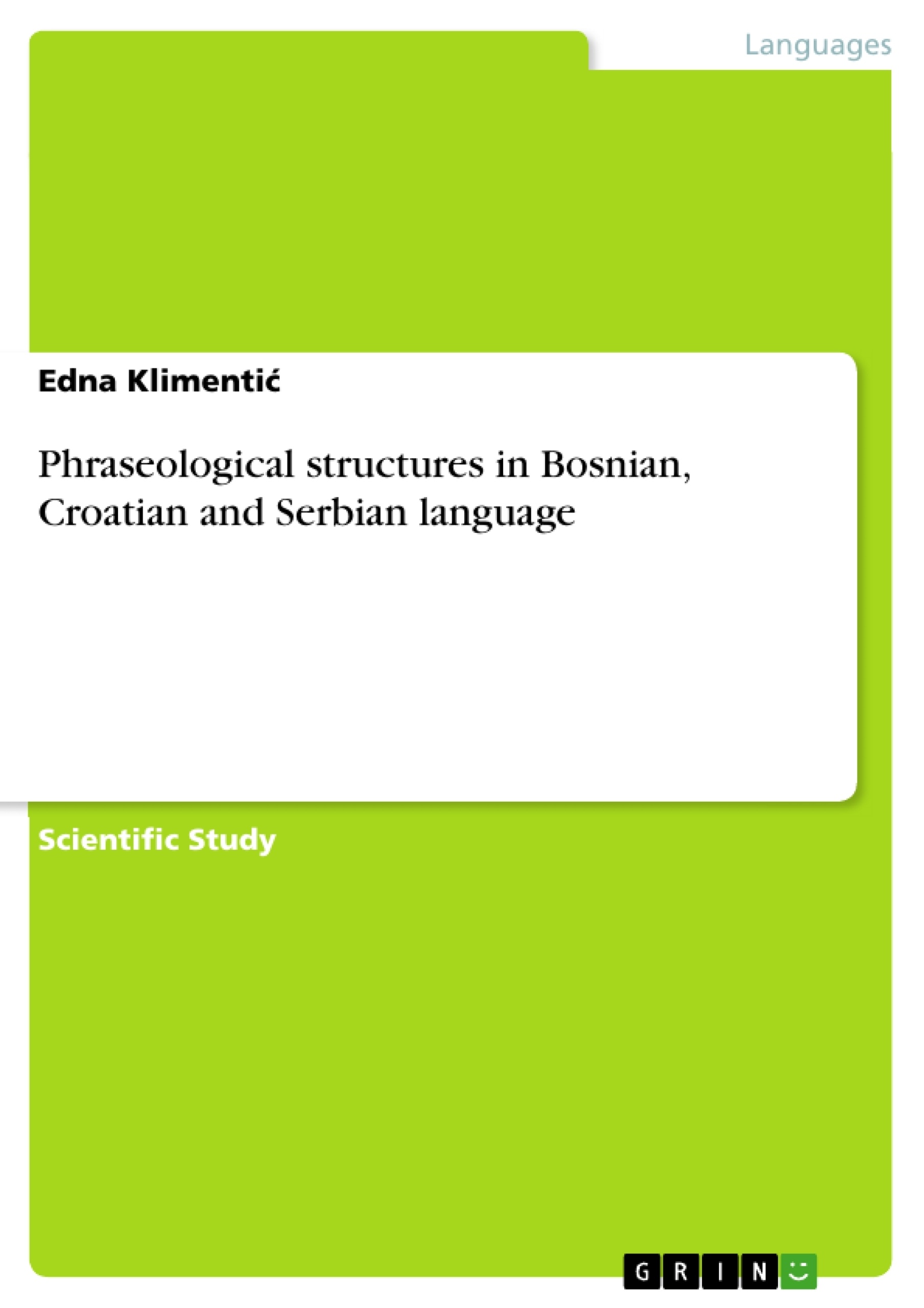This work discusses structural and semantic features that one form needs to have in order to be recognized as phraseme in Bosnian, Croatian and Serbian language and trying to point out the importance of defining the phraseme as a structure that has at least two autosemantic components (not less than two). That is why the constructions treated differently in the phraseological literature are the main topic of this paper.
Particular emphasis is placed on forms that do not meet this criterion but fully comply with the other requirements set by the definition of the phraseologism. Related to the indicated problem, the key question is whether a structural or semantic aspect of the considered constructions should be given an advantage, especially when the examples are compound words with its features.
Inhaltsverzeichnis (Table of Contents)
- THEORETICAL ISSUES
- Introduction
- The development of phraseology as a linguistic discipline…........
- PHRASEOLOGY IN SOUTH SLAVIC LANGUAGES
- Defining phrasemes and their characteristics (terminology and definitions)..\n
- ON SEMANTICS
- The semantic aspect of phraseology..\n
- PHRASEMES/LEXEMES/ SYNTAGMAS..
- The relation between phrasemes, lexemes and syntagmas
- Autosemanticity and two component structure as complementary features.\n
- Two-component structure at the expense of the autosemanticity..\n
- COMPOUNDING AND PHRASEOLOGY.
- Introducing
- Compounding in Bosnian (Croatian and Serbian) language
- Hyphenated compound words.
- One word phrasemes?
- CONCLUSION.
Zielsetzung und Themenschwerpunkte (Objectives and Key Themes)
This research paper aims to explore the structural and semantic characteristics that define a phraseme, particularly emphasizing the importance of having at least two autosemantic components. The paper focuses on constructions that are often debated in phraseological literature and examines those that deviate from this criterion but still fulfill other requirements of phraseologisms. It also investigates the relationship between compound words and phraseology, particularly in the context of South Slavic languages.
- Defining and identifying phrasemes
- The role of autosemanticity in phraseological structure
- The relationship between phrasemes, lexemes, and syntagmas
- The impact of compounding on phraseology
- Phraseology in South Slavic languages
Zusammenfassung der Kapitel (Chapter Summaries)
The introductory chapter delves into the key characteristics that define a phraseme, emphasizing the requirement of two or more autosemantic components. It highlights the complexities of analyzing phraseological structures that may not strictly adhere to this criterion. The chapter also discusses the historical development of phraseology as a linguistic discipline, tracing its evolution from simply collecting and classifying phrasemes to studying their meanings and functions.
Chapter two focuses on the specific characteristics of phraseology in South Slavic languages. It explores the various definitions and terminologies used to describe phrasemes in these languages, highlighting the specific challenges in identifying and classifying them within this linguistic context. The chapter also examines the impact of cultural and historical influences on the development of phraseology in the region.
Chapter three dives into the semantic aspects of phraseology, exploring how phrasemes derive their meanings and how these meanings can differ from the sum of their individual parts. This chapter examines the interplay between semantics and pragmatics in phraseological use, considering how phrasemes contribute to the overall meaning and effect of a text or utterance.
Chapter four explores the intricate relationship between phrasemes, lexemes, and syntagmas. It analyzes the concept of autosemanticity and its role in distinguishing between these linguistic units. The chapter also investigates the impact of two-component structures on the semantic characteristics of phrasemes, analyzing how these structures can contribute to the overall meaning of the phraseme.
Chapter five examines the relationship between compounding and phraseology, particularly in the context of the Bosnian, Croatian, and Serbian languages. It analyzes the specific characteristics of hyphenated compound words and their potential classification as phrasemes. The chapter also discusses the role of morphology and syntax in defining the boundaries between compound words and phraseological structures.
Schlüsselwörter (Keywords)
This research paper explores the key concepts of phraseology, autosemanticity, compounding, and the structural and semantic characteristics of phrasemes. It investigates the relationship between these concepts in the context of South Slavic languages, particularly Bosnian, Croatian, and Serbian. The paper examines various approaches to defining and identifying phrasemes, highlighting the complexities and debates within the field of phraseology. Key themes include the development of phraseology as a linguistic discipline, the analysis of phraseological structures in different languages, and the impact of language contact and cultural influences on phraseological phenomena.
- Quote paper
- Edna Klimentić (Author), 2020, Phraseological structures in Bosnian, Croatian and Serbian language, Munich, GRIN Verlag, https://www.grin.com/document/537205



